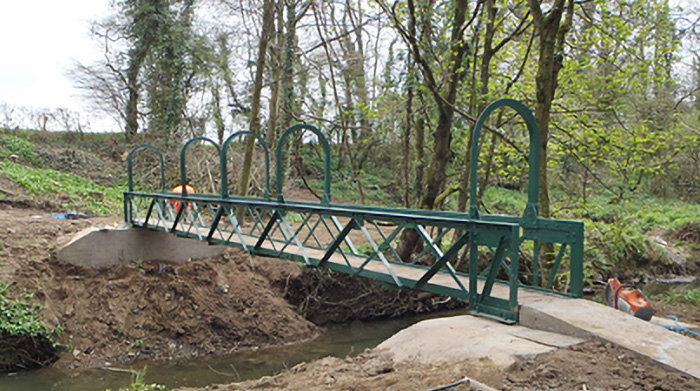
Alford Bridge Refurbishment
This project involved the removal, refurbishment and re-installation of a footbridge which spans the river Brue, at Alford, Somerset.
Suttle Projects were contracted to carry out the work, which also included removing and installing new piled bridge abutments and installing scour protection rock armour and sheet piles, to the northern bank section.
Access to the site, which was through private land and local authority owned woodland, was very restricted. By adapting a mini piling rig to suit the surroundings, we were able to move small plant to the location without impacting on the area.
In order to aid the egress of personnel and small tools across the river, it was necessary to assemble a temporary bridge adjacent to the existing bridge. This work required the deployment of a 50-tonne crane. A crane pad, using aluminium track underlain with a geotextile layer, was built to support the crane. The temporary bridge was closed with appropriate fencing and signage installed to prevent trespass or danger to the general public.
Following the completion of the temporary bridge, the existing bridge was removed from its abutments, lifted and placed alongside the crane pad. The bridge deck was then broken down into components on site and refurbished.
A retrofitted bracing arch, fabricated to match the existing brace arches, was checked for alignment and match drilled with the existing bridge before disassembly. The new steel angle for fixing to the abutments was also checked for alignment with the existing bridge components, and templated before disassembly.
The old bridge abutments were removed with an 8-tonne midi excavator and breaker attachment. The broken-up concrete was then loaded into wheelbarrows and stockpiled.
A dry-working area was created using plywood boards, that were installed waterside of the abutments, so as to prevent concrete debris entering the watercourse.
Short interlocking steel sheet piles were driven into the toe of the riverbank along the scoured section. This was then benched to accommodate the rock armour infill. This was transported to the northern bank using a 4-tonne dumper and placed with care using the digger bucket. Rock armour was overlain with geotextile and soil.



Good value, high quality materials and service